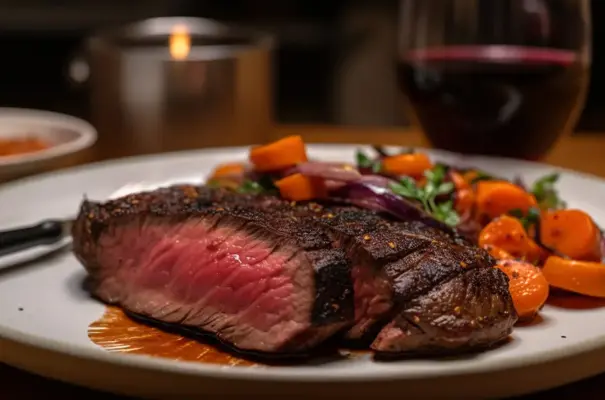While the debate over alternative protein sources grows, especially in the context of plant-based diets, science continues to highlight a fact little understood outside academic and nutritional circles: the quality and digestibility of red meat protein are greater than that found in plant-based foods. In other words, the human body can utilize it much more efficiently.
According to the most recent scientific review conducted by researchers Carrie Ruxton and Susan Gordon, published in 2024 in the international journal of animal biosciences, Animal, beef achieves up to 94% protein bioavailability, while wheat stands at around 86% and grains, such as beans or lentils, do not exceed 78%. Bioavailability is the measure of the efficiency with which the body absorbs and utilizes a nutrient. This means that when consuming meat, the body can absorb and utilize most of the amino acids present — unlike what happens with plant proteins, which face natural barriers such as antinutrients and a lower variety of essential amino acids.
In other words, it’s not enough for a food to have a large amount of protein — that protein must be easily digestible and contain all essential amino acids in adequate proportions. To assess this quality, scientists use a metric called the Protein Digestibility Corrected Amino Acid Score (PDCAAS), which scores foods on a scale from 0 to 1. Foods with a PDCAAS close to 1 are considered ideal for meeting human needs. Beef achieves a score of 0.9, while plant-based foods range between 0.5 and 0.7. According to the Ruxton and Gordon study, this superior performance of meat results from the complete supply of essential amino acids — those compounds the body does not produce to form proteins and which, therefore, must be ingested through diet — and the high natural digestibility of animal protein. The lower efficiency of plant proteins implies that, to achieve the same levels of essential amino acids, it would be necessary to consume larger volumes and combine different plant sources — something not always feasible in daily diets or financially accessible.
Cut and Preparation Also Impact Protein Availability
In addition to digestibility, the protein content of beef varies according to the type of cut and cooking method. According to data consolidated in the study “Nutritional composition of red meat” by Peter G. Williams, published in the journal Nutrition & Dietetics (2007), raw red meat cuts contain between 20g and 25g of protein per 100g. After cooking, this amount increases to 28g to 36g per serving, due to water loss. An example is filet mignon: with just 100g, it provides about 39% of the daily protein requirement for a pregnant woman.
The average nutritional analysis of lean cuts of beef, pork, and lamb — based on the British McCance and Widdowson table (2021) — shows that, in addition to protein, beef stands out as a significant source of iron, zinc, selenium, and vitamin B12, essential micronutrients for maintaining health, especially for women of childbearing age, the elderly, and children.
The data underscores the importance of dietary decisions taking into account not only the presence of proteins or minerals, but primarily their quality and utilization by the body. These requirements are met by beef which, especially in its natural form and with lean cuts, is a reliable and efficient source of high biological value protein.
For this reason, large companies in the sector, such as Minerva Foods, have been increasingly focusing on cuts that offer quality beyond just flavor, which is guaranteed by a differentiated, end-to-end production process. Products from the Cabaña Las Lilas brand, for example, are sourced from selected, grass-fed animals, which are monitored by specialists throughout their entire cycle, from the genetic combination process to certification, through a standardized process implemented across the entire value chain. The result is a distinct degree of marbling — intramuscular fat within the meat fibers — which ensures characteristic tenderness and flavor.
Highlighting the functional attributes of meat is also a way to align product offerings with the growing demands for health, food efficiency, and well-being.




